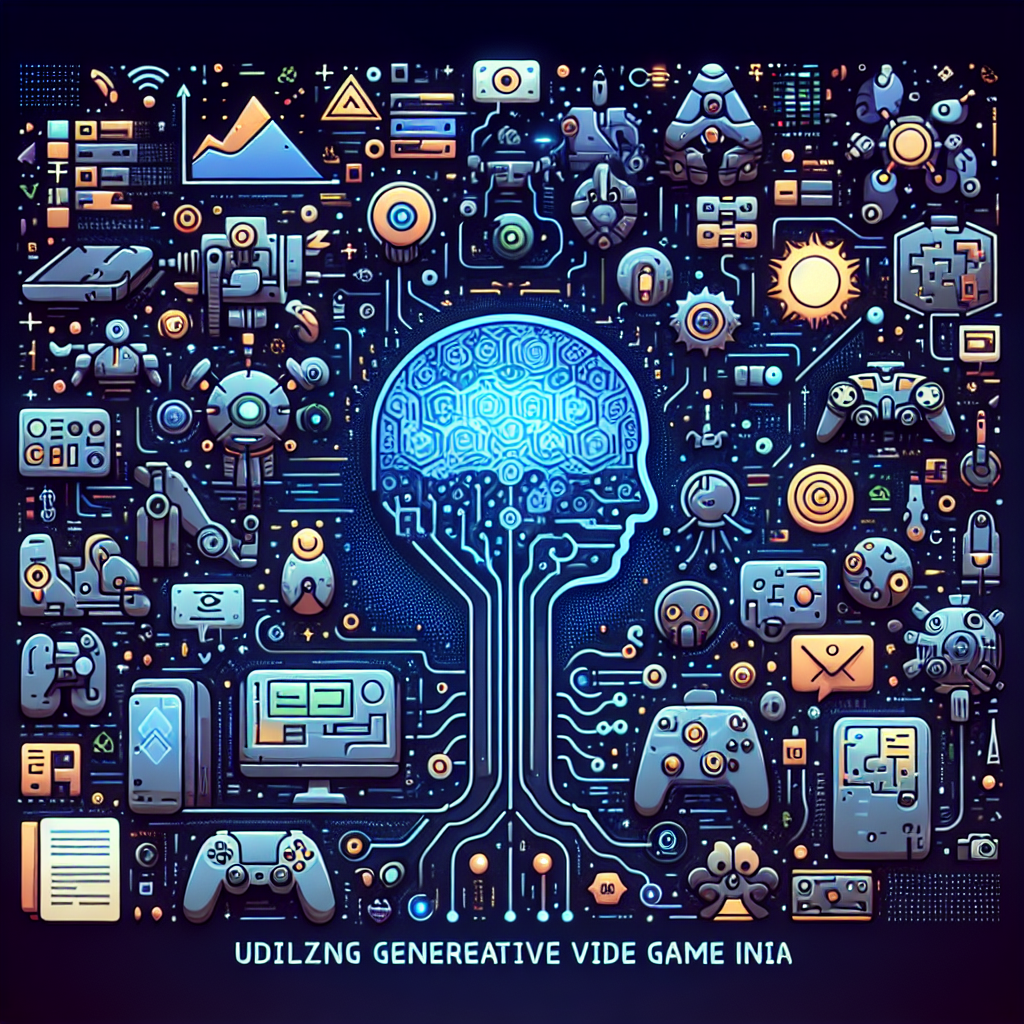Generative AI, also known as procedural content generation, has been revolutionizing the video game industry in recent years. This technology allows developers to create vast and complex game worlds, characters, and storylines with minimal human input. By using algorithms to generate content, game designers can produce unique and dynamic experiences for players, leading to more engaging and immersive gameplay.
One of the most exciting applications of generative AI in video game design is the creation of procedurally generated game worlds. Instead of manually designing every aspect of a game environment, developers can use algorithms to generate landscapes, buildings, and other elements on the fly. This not only saves time and resources but also allows for more diverse and interesting game worlds that can be explored endlessly.
Another key area where generative AI is making an impact is in the creation of non-player characters (NPCs). By using algorithms to generate AI-controlled characters, developers can create more lifelike and dynamic interactions for players. These NPCs can have their own unique personalities, behaviors, and dialogue, making them feel more like real individuals within the game world.
Generative AI is also being used to create dynamic storylines and quest systems in video games. By using algorithms to generate branching narratives, developers can offer players a more personalized and engaging experience. Players can make choices that impact the direction of the story, leading to multiple endings and outcomes based on their decisions.
One of the most well-known examples of generative AI in video game design is No Man’s Sky, a game that features procedurally generated planets, creatures, and ecosystems. The game’s universe is so vast and diverse that players can explore for hours without encountering the same content twice. This level of procedural generation would have been impossible without the use of generative AI.
While generative AI has opened up new possibilities for video game design, it also comes with its own set of challenges. Developers must strike a balance between handcrafted content and procedurally generated elements to ensure a cohesive and engaging player experience. Additionally, generative AI algorithms must be carefully designed and tested to prevent issues such as repetitive content or game-breaking bugs.
FAQs:
Q: How does generative AI work in video game design?
A: Generative AI uses algorithms to create content such as game worlds, characters, and storylines. These algorithms can generate content based on predefined rules, randomness, or player input, allowing for dynamic and unique experiences in video games.
Q: What are the benefits of using generative AI in video game design?
A: Generative AI can save time and resources for developers by automating the creation of game content. It also allows for more varied and dynamic gameplay experiences, as content can be generated on the fly based on player actions or other factors.
Q: Are there any drawbacks to using generative AI in video game design?
A: While generative AI offers many benefits, it can also present challenges such as maintaining a cohesive player experience and preventing issues like repetitive content or game-breaking bugs. Developers must carefully design and test their generative AI algorithms to ensure a high-quality gameplay experience.
Q: What are some examples of video games that use generative AI?
A: No Man’s Sky is one of the most well-known examples of a video game that uses generative AI to create procedurally generated content. Other games, such as Minecraft and Dwarf Fortress, also use generative AI to create dynamic and unique gameplay experiences.
In conclusion, generative AI is a powerful tool that is transforming the video game industry by allowing developers to create vast and dynamic game worlds, characters, and storylines. By using algorithms to generate content, developers can offer players more engaging and personalized experiences that keep them coming back for more. As generative AI technology continues to advance, we can expect even more innovative and immersive video games to be developed in the future.

